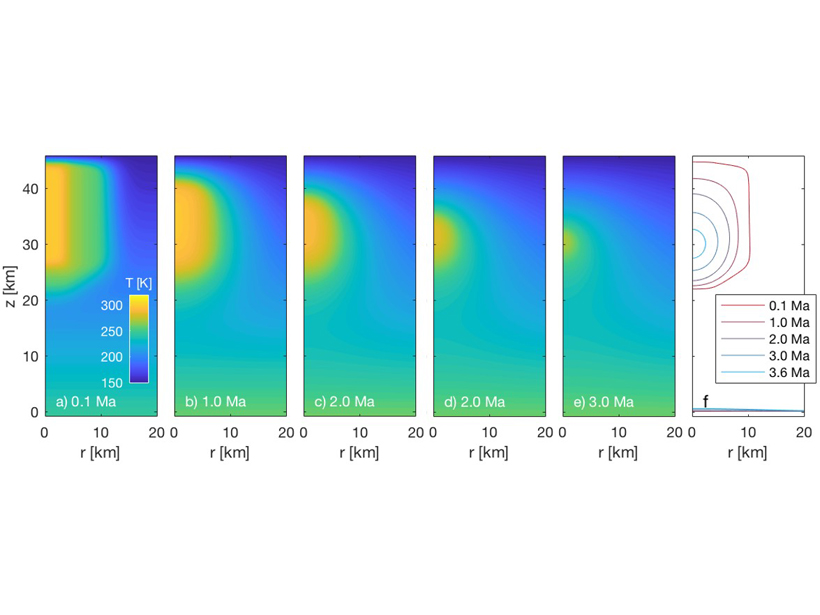Source: Geophysical Research Letters
The bright spots on the floor of Occator crater on the dwarf planet Ceres have baffled scientists since their first observation by the Dawn spacecraft. Occator itself is fairly young, estimated at about 22 million years old, but this age date is uncertain. More perplexing, the formation of the bright spots appears delayed relative to the creation of Occator by upwards of 18 million years, though again given the uncertainties, perhaps only a few million years.
Hesse and Castillo‐Rogez [2018] propose that the bright spots are the product of briny cryovolcanism from a partial melt chamber beneath the crater that formed from the addition of impact heat. Their simulations show that such a melt chamber could persist for millions of years, thereby explaining delayed formation of the spots of a comparable time. A delay that approaches 18 million years, however, would require implausibly large melt volumes, which implicates the connection of the melt chamber with a deeper brine reservoir within Ceres.
Citation: Hesse, M. A., & Castillo‐Rogez, J. C. [2018]. Thermal evolution of the impact‐induced cryomagma chamber beneath Occator Crater on Ceres. Geophysical Research Letters, 45. https://doi.org/10.1029/2018GL080327
—Andrew Dombard, Editor, Geophysical Research Letters
Text © 2019. The authors. CC BY-NC-ND 3.0
Except where otherwise noted, images are subject to copyright. Any reuse without express permission from the copyright owner is prohibited.

